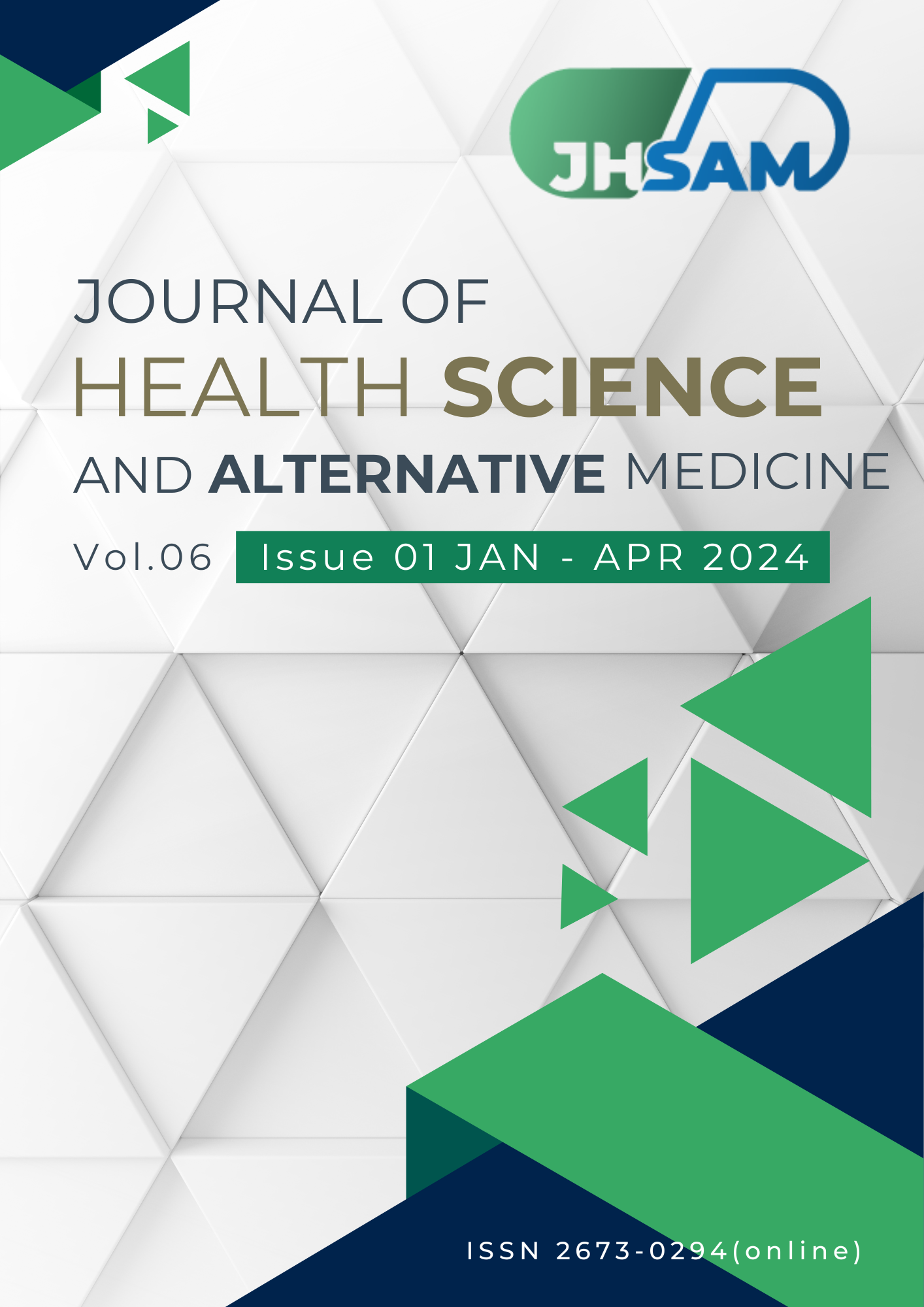Industrial Noise Measurement and Noise Contour Mapping: A Case Study in Power Plant, Rayong Province, Thailand
Main Article Content
Abstract
Introduction: This study aimed to assess the noise level in a working environment and to illustrate noise contour maps to define areas for wearing personal protective equipment in the electricity production process of the power plant in Rayong province.
Methods: The measurement of noise levels was divided into all areas, a total of 1,700 points, using the sound level meter model NL-42EX (Class2) standardized by IEC61672 Type2, ANSI S1.4, JISC1509-1. Then, the results were illustrated to create the noise contour map and define areas for wearing personal protective equipment.
Results: Compared to the standard noise levels that allowed employees to average receive throughout a day's work in 2018 from the Department of Labor Protection and Welfare, 45 points were detected over the standard level at 85 dB(A) (2.5 %) at the areas of machinery works continuously, steam turbines, gas turbines, steam generators, etc. Protective equipment and measures must be implemented for electricity production workers. To prevent hearing impairment, one should initially wear personal protective equipment, which can reduce noise exposure by Ear Muff. The derated NRR is 24 dB(A), and the sound level of the employee when wearing an ear muff is 65.7 dB(A), which is a safe sound level.
Conclusion: Additionally, a hearing conservation program should be implemented to comply with the legislation and reduce risks to employees' hearing performance.
Keywords: Noise Measurement, Noise contour mapping, Power plant
Article Details

This work is licensed under a Creative Commons Attribution-NonCommercial-NoDerivatives 4.0 International License.
JHSAM publishes all articles in full open access, meaning unlimited use and reuse of articles with appropriate credit to the authors.
All our articles are published under a Creative Commons "CC-BY-NC-ND 4.0". License which permits use, distribution and reproduction in any medium,
provided that the original work is properly cited and is used for noncommercial purposes.
References
Rattanarak A. Situation of hearing loss from exposure to loud noise in occupations in Thailand and abroad. Journal of Public Health Research. 2017; 10 (1): 1-10.
Bunprom P, Chaiyanan S, Phungkat Y, Sirijaroonwong U. The measurement of sound levels in the washing department at a jeans dyeing factory in Samut Sakhon Province, Thailand. Journal of Kanchanaburi Rajbhat University. 2020; 9(2), 316-27.
Workplace Health and Safety. Managing noise and preventing hearing loss at work. Available from: https://www.worksafe.qld.gov.au/safety-and-prevention/hazards/hazardous-exposures/noise).
National Occupational Research Agenda. Hearing loss. Available from: http://www.cdc.gov/noish/nrhear.html
National Institute for Occupational Safety and Health. Preventing occupational hearing loss: a practical guide. Available from: http://www.cdc.gov/niosh/docs/96-110/pdfs
Bunprom P, Chaiyanan S, Phungkat U, Sirijaroonwong U. The noise contour map in bleaching and dyeing process to determine the standard of hearing conservation program of a factory in Samut Sakhon Province, Thailand. Journal of Public Health. 2022; 17(2), 1-11.
Sari MA, Adnan A, Munir D, Eyanoer PC. The correlation of smoking and noise induced hearing loss on workers at a palm oil factory X in Medan-Indonesia. Bali Medical Journal. 2017; 6(3), 637-40.
Balazikova M, Andrejiová M, Wysoczanska B. Methodology for Risk Assessment of Noise Effects at Workplace. MM Science Journal. 2019; (05):3426-30.
Juwarna W, Adnan A, Haryuna TS. Noise induced hearing loss in begerpang palm oil mill workers. An International Journal of Otorhinolaryngology Clinics. 2018; 10(2): 56-60.
Situngkir D, Ayu IM, Sipahutar L. Respondent’s characteristic and noise intensity as predicting factors of noise induced hearing loss. The Indonesian Journal of Occupational Safety and Health. 2020; 9(3): 239-47.
Subramaniam M, Hassan M Z, Sadali MF, Ibrahim I, Daud MY, Aziz S, et al. Evaluation and analysis of noise pollution in the manufacturing industry. Journal of Physics: Conference Series. 2019; 1150 (1): 012019
Zaw AK, Myat AM, Thandar M, Htun YM, Aung TH, Tun M, et al. Assessment of noise exposure and hearing loss among workers in textile mill (Thamine), Myanmar: a cross-sectional study. Safety and Health at Work. 2020; 11(2): 199-206.
Announcement from the Department of Labour Protection and Welfare Regarding calculating the sound level felt in the ear when wearing personal safety equipment B.E.2561 (A.D.2018). The Royal of Thai Government Gazette of The Kingdom of Thailand 2018:135 (Pt 33 ng): 9-10.
Hassanvand D, Zare S, Ghotbi-Ravandi MR. Noise assessment and sound map projection using surfer and noise at work tools in a tire manufacturing complex in Iran, 2018. Journal of Occupational Health and Epidemiology. 2019; 8(2): 109-17.
Cahyadi B, Timang GA. Mapping of noise levels made by drilling machines on project x using contour zone method. Materials Science and Engineering. 2019; 528(1): 012066.
Li X, Dong Q, Wang B, Song H, Wang S, Zhu B. The influence of occupational noise exposure on cardiovascular and hearing conditions among industrial workers. Scientific Reports. 2019; 9(1): 11524.
Panjaitan N, Panggabean UN. Analysis noise level in production the palm oil: a case study. Journal Teknik Industri. 2022; 23(2): 121-32.
Hasrul N, Ngadiman A, Mansur R, Sirat R, Mohd MF. Safety and risk evaluation using HIRARC model at palm oil mill. Int J Innov Technol Explor Eng. 2019; 8(11): 790-7.
Announcement of the Department of Labour Protection and Welfare on criteria and measurement methods and analysis of working conditions regarding levels of heat, light, or noise, including the duration and type of work that must be carried out B.E.2561 (A.D.2018). The Royal of Thai Government Gazette of The Kingdom of Thailand 2018:135 (Pt 57 ng): 11-16.
Panjaitan N, Panggabean UN. Analysis noise level in production the palm oil: a case study. Jurnal Teknik Industri. 2022; 23(2): 121-32.


